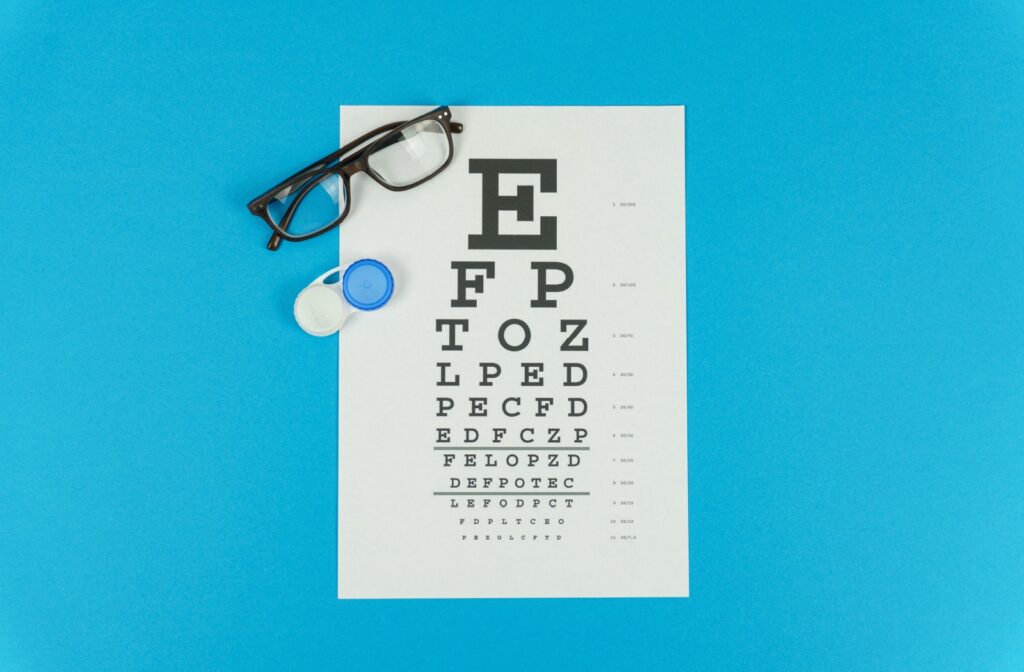You may have heard about the eye conditions “stigmatism” and “astigmatism” and were left wondering if there’s a difference between the two conditions. It turns out, “stigmatism” is just a mispronunciation of “astigmatism”. Luckily, astigmatism is easily treatable and can be treated with contact lenses, eyeglasses, and in severe cases, laser eye surgery!
What Is Stigmatism?
Here’s the truth—“stigmatism” isn’t an actual medical condition. It’s a common mispronunciation or misunderstanding of “astigmatism.” You’ll often hear people say they have “a stigmatism” when they’re talking about astigmatism.
What Is Astigmatism?
Now let’s focus on astigmatism. Astigmatism is a refractive error that occurs when the cornea or the lens inside your eye has an irregular shape. Instead of being evenly round like a basketball, an astigmatic cornea is more oval-shaped, like a football. This uneven shape distorts the way light enters the eye, causing blurred or distorted vision.
Key Symptoms of Astigmatism
Astigmatism doesn’t always cause noticeable symptoms, so you might not even realize you have it. However, common signs include:
- Blurred or distorted vision: Difficulty focusing on objects, either up close or far away.
- Eye strain: Feeling fatigued after using your eyes for extended periods, especially when reading or staring at screens.
- Headaches: Frequent headaches, particularly after prolonged visual tasks.
- Difficulty with night vision: Trouble seeing clearly in low-light or nighttime settings.
What Causes Astigmatism?
Several factors can contribute to astigmatism:
- Genetics: Astigmatism often runs in families, so if one of your parents has it, you might, too.
- Eye injuries or surgery: Any scarring on the cornea from injury or surgery may lead to an irregular shape.
- Keratoconus: A rare condition where the cornea becomes progressively thinner and more cone-shaped can also contribute to astigmatism.
Diagnosing Astigmatism
Are you worried that you might have astigmatism? Don’t self-diagnose! The only way to confirm it is through an eye exam with an optometrist or ophthalmologist.
Tests Used to Detect Astigmatism
Your eye doctor will typically use a few specific tests during a comprehensive eye exam:
- Visual acuity test: Reading letters on an eye chart helps assess how well you see at various distances.
- Keratometry: Measures the curvature of your cornea to determine its shape and detect irregularities.
- Refraction test: Using a phoropter (an instrument with lenses), the doctor determines which prescription provides the clearest vision.
These tests are painless, quick, and essential for diagnosing astigmatism.
Treatment Options for Astigmatism
The good news? Astigmatism is highly treatable! Depending on the severity and your lifestyle preferences, there are several options to correct or manage the condition:
1. Eyeglasses
Eyeglasses with specially designed lenses can correct the way light enters your eyes, providing crisp and clear vision. This is often the simplest and most cost-effective solution.
2. Contact Lenses
Toric lenses, designed specifically for astigmatism, offer an alternative to glasses. For those who prefer a more natural field of vision or are active in sports, contact lenses can be a great option.
3. Laser Eye Surgery
Laser procedures like LASIK or PRK reshape the cornea, permanently correcting astigmatism. This option is perfect for those ready to ditch eyewear altogether—but not everyone is a candidate, so consult your optometrist first.
4. Orthokeratology (Ortho-K)
This lesser-known option involves wearing specially designed rigid contacts overnight to temporarily reshape your cornea for clear vision the next day. Ideal for mild cases of astigmatism, Ortho-k offers a non-surgical, reversible option.
Can You Prevent Astigmatism?
Unfortunately, astigmatism cannot really be prevented, because it’s influenced by genetics and structural factors in the eye. However, here’s how to maintain overall eye health and ensure proper management:
- Get regular eye exams. Early detection can prevent complications and ensure the right corrective measures.
- Protect your eyes with UV-blocking sunglasses to prevent sun damage and wear protective gear for activities with a risk of eye injuries.
- Practice the 20-20-20 rule to reduce digital eye strain, look at something 20 feet away for 20 seconds every 20 minutes when working on screens.
When to See an Eye Doctor
Even if your vision seems fine, regular eye exams are crucial. However, if you notice any of the following, schedule an appointment immediately:
- Persistent headaches or eye strain
- Difficulty performing everyday tasks due to blurry vision
- Challenges with night driving or reading small print
Get Visual Clarity Today
While “a stigmatism” is a mispronunciation, astigmatism is a real and manageable condition. Regular eye exams, knowledge of treatments, and attention to your eye care routine can keep your vision clear and your eyes comfortable.At 2020 Eyecare Ohio we offer comprehensive eyecare services for all your visual needs! If you think you have astigmatism, contact us today to schedule an eye exam.



